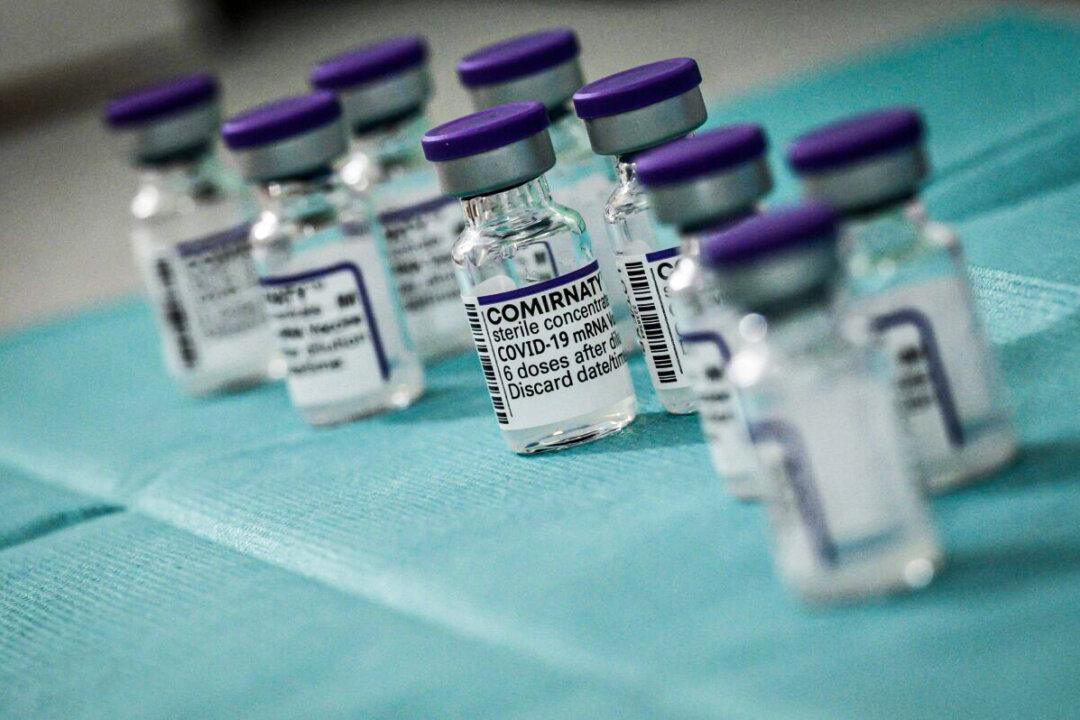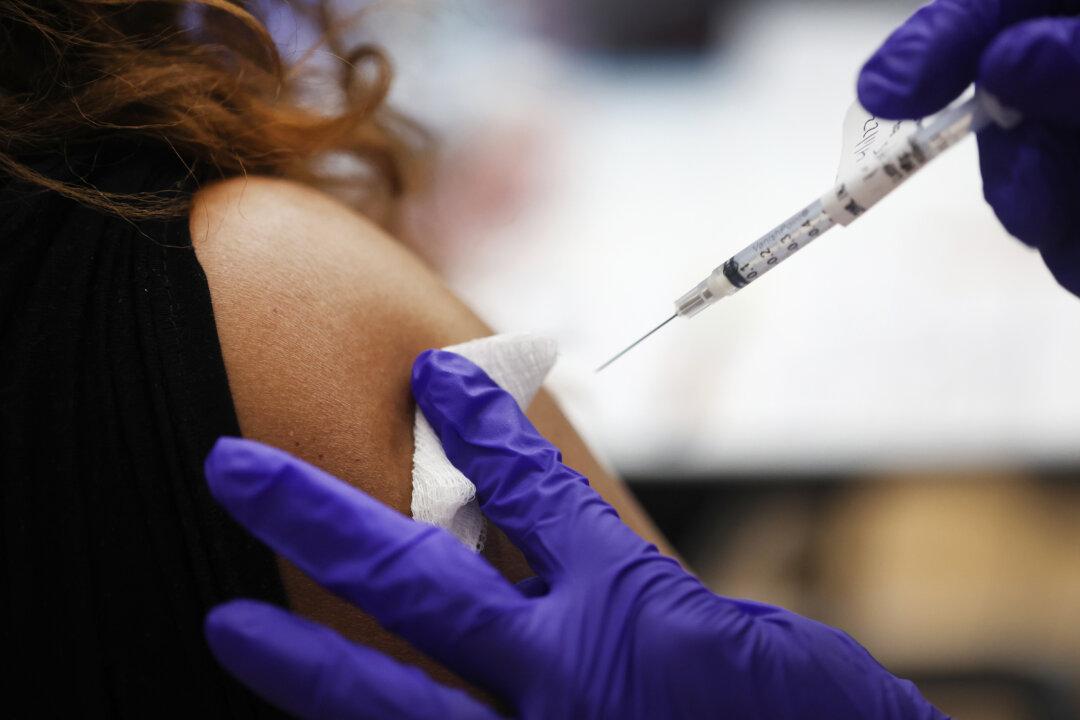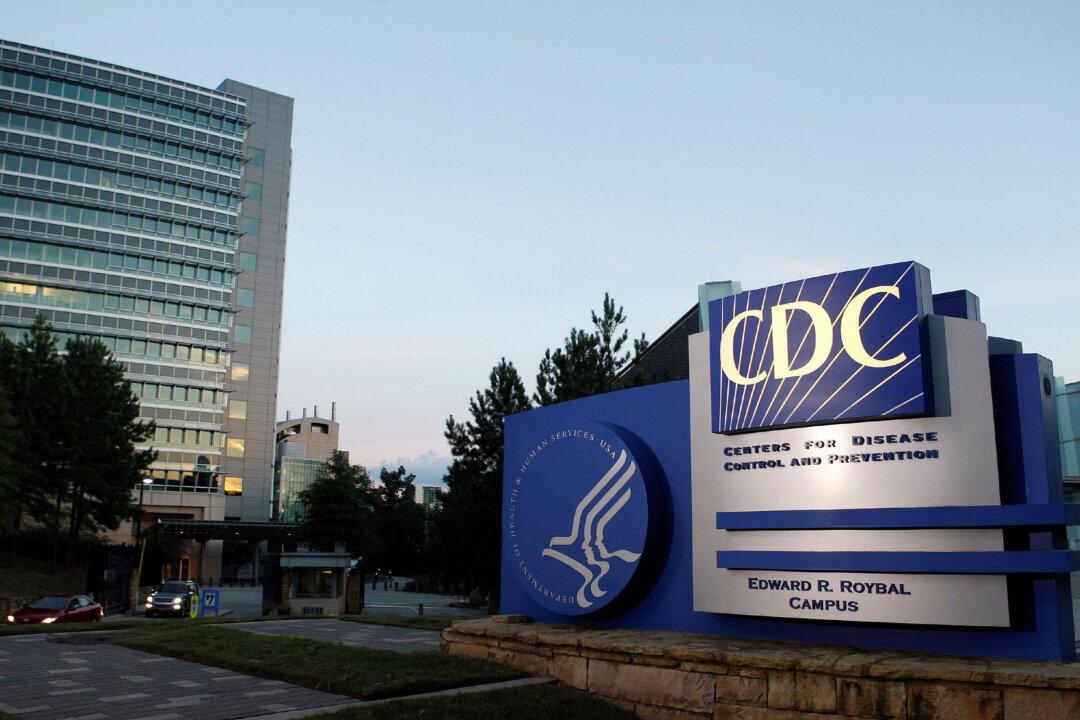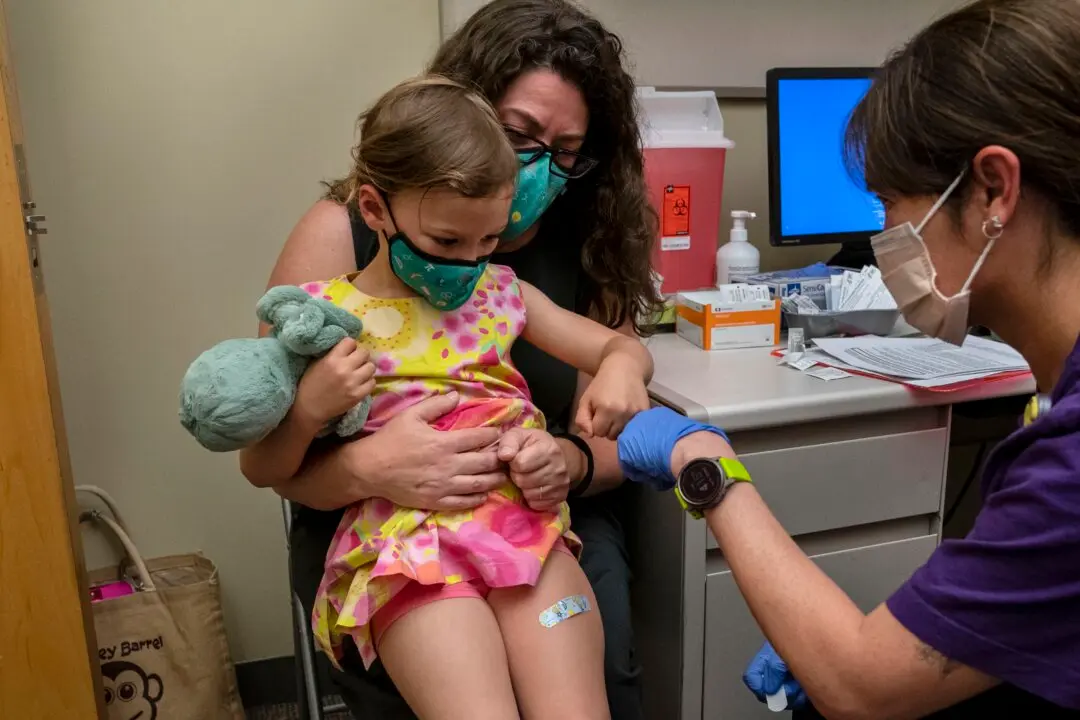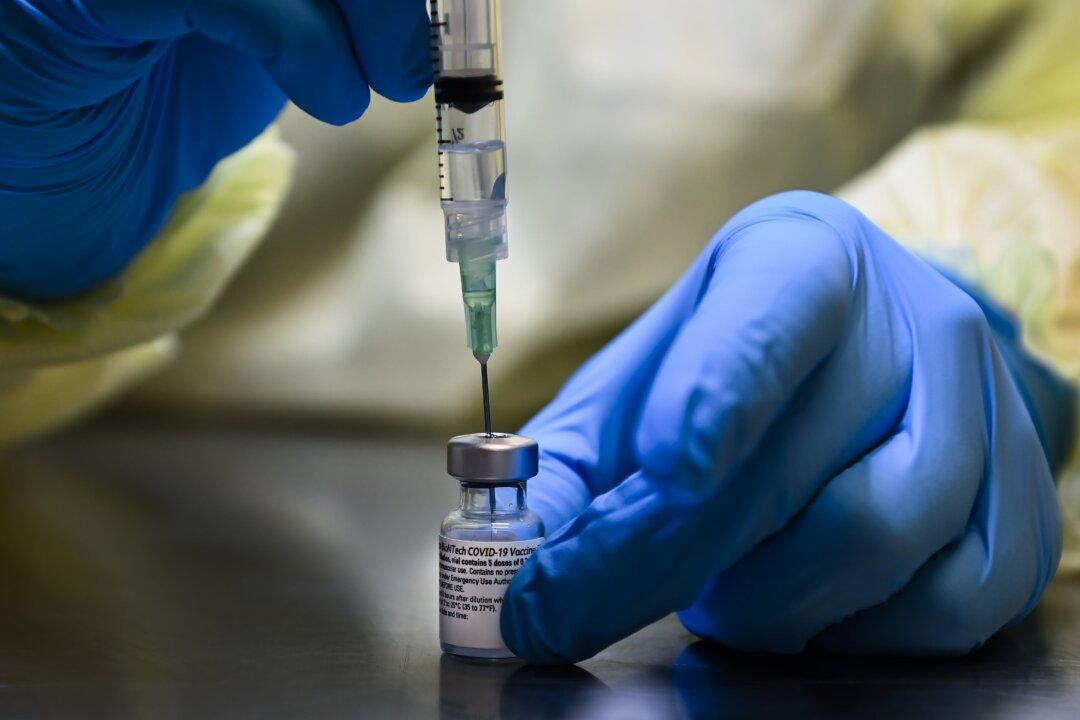New data suggests that two doses of the Pfizer COVID-19 vaccine don’t provide very much protection from infection for children 5 to 15 years old against the Omicron variant of the CCP virus, according to new data published by the Centers for Disease Control and Prevention (CDC) journal Morbidity and Mortality Weekly Report.
The CDC analyzed data from the Pediatric Research Observing Trends and Exposures in COVID-19 Timelines (PROTECT) study, which involved 1,364 children ages 5 to 15 from Arizona, Texas, Florida, and Utah. Weekly nasal swabs and surveys were submitted from July 2021 through last month, whether the children had symptoms or not.

